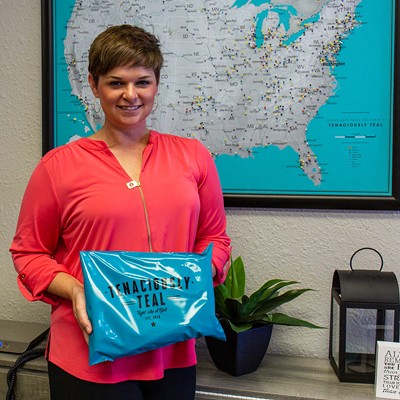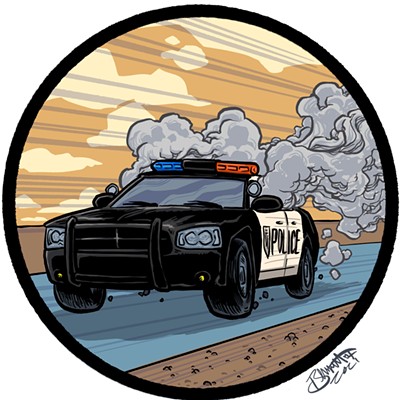The one-page report listed five painkillers — oxymorphone, morphine, hydrocodone, hydromorphone and oxycodone — and the anti-anxiety medication alprazolam as causing “probable mixed drug toxicity,” which led to central nervous system depression, pulmonary edema and aspiration pneumonia.
“The chemicals found in his system were not those that had been prescribed by a physician, and we are looking in to try to determine where these pills may have come from,” said El Reno Police Chief Ken Brown.
Box, a senior linebacker at the University of Oklahoma, died May 19 less than a week after earning his diploma. The athlete had redshirted as a freshman and never played his senior season of eligibility at Oklahoma. After breaking his back at Enid High School, Box was plagued with elbow and knee injuries during his first two OU seasons and endured relentless back pain that required him to rest for five games.
Box’s pain management began in high school under doctors’ care, according to Pastor Wade Burleson of Enid’s Emmanuel Baptist Church. Box’s parents, Craig and Gail Box, released a statement July 12 claiming the Enid standout sustained many injuries during the last seven years, with most requiring surgery.
“The last was the most frightening for him,” his parents wrote. “In August of the 2010 season, he had a disc rupture in his back, and he lost the feeling in his left foot. We were certain his career was over.
“As always, though, he battled back when he saw the team needed him. Willing his battered body back to the field where only the elite do battle. It is with much sadness we look back and see that recently Austin had turned to other methods of managing his pain. Methods that we hope if others are employing, they will see his tragic accident as a message and think about the consequences.”
El Reno authorities arrived May 19 to find friend J.T. Cobble performing CPR, according to a police report.
Cobble said in a 911 call that Box was taking pain medication and told police he believed he had overdosed. “Controlled dangerous substance” was listed under the offense category in the report, and “drugs” was cited as possible/probable motivation.
Brown said no prescription bottles were located inside the residence, but one pill was discovered and sent to the Oklahoma State Bureau of Investigation for analysis.
“At this point, there is no indication that Mr. Cobble is involved in this in any form,” Brown said.
In last week’s statement, Box’s parents described their deceased son as choosing to “suffer in silence” rather than hurt or disappoint others.
“His greatest fear was letting down other people, whether it was his teammates, coaches, friends or family,” they wrote. “In his 22 years of life, he never thought to complain because he felt he had been given so much.”
Mark Woodward, spokesman and education
officer for Oklahoma Bureau of Narcotics and Dangerous Drugs, said the
drugs in Box’s system were “very, very powerful prescription
painkillers.” Woodward said 81 percent of the state’s 695 autopsies for
drug-related deaths in 2010 involved prescription drugs.
“Of
those 695, probably 80 percent or more involve multiple drugs as
opposed to a single-drug death,” Woodward said. “Finding combination
deaths (are) the norm rather than the exception. We saw that with Heath
Ledger.”
Ledger,
who won an Oscar for his role in “The Dark Knight,” died of an
accidental overdose of six different painkillers and sedatives in 2008.
“Immediately, people suspected suicide, but in actuality that’s typical
for drug addicts,” Woodward said. “They need more and more just to
function. It’s not about trying to commit suicide. But at some point,
these large levels of drugs that help them function eventually lead to
their downfall because they can stop the heart and stop the lungs.
That’s what those painkillers will do at high levels. It is very, very
common among drug addicts to find multiple different drugs, even in
different classes.”
In
general, Woodward said prescription drugs are either obtained through
“shopping” multiple physicians simultaneously, stolen from a pharmacy or
pilfered from the medicine cabinets of friends or family.
In Box’s case, however, Woodward said authorities are uncertain how the substances were acquired.
“One is doctor shopping, and I know that’s what investigators are looking at,” he said.
Jim
Priest, the executive director of the Oklahoma City-based nonprofit
Fighting Addiction Through Education, said prescription drugs are
available from many different sources.
“The
point is less about where he got them than it is about educating people
about their inherent danger when taken without a doctor’s supervision,”
Priest said.
Ultimately, Box’s tragic death provides “a teachable moment,” Priest said.
“Especially
in the area of prescription drugs, we need to insure young people are
alerted to the danger posed by drugs that seem ‘safe,’” he said.
For more about Austin Box, click through to read a story in the June 29 issue of the Gazette.
Update: Sooner football players will wear a helmet sticker commemorating Box this season, according to an email from OU Senior associate athletic director for communications Kenny Mossman. He also said that other tributes are being discussed, but are not yet finalized.
Photo by Jerry Laizure
Watch Gazette editor-in-chief Rob Collins discuss this story on the July 24th episode of Flashpoint below.











